This post may contain affiliate links. Please see my disclosure policy for more details.
If you’re a Brit like me and planning on moving Down Under, it won’t take you long to spot the many differences between houses in Australia and those in the UK. As a house sitter, I’ve stayed in over 80 homes in Australia, so I’ve got a fair bit of knowledge on all their different features.
From the architecture to the outdoor space to the indoor temperature, there are some vast variations between British homes compared to those in Australia. They even have different names for things Down Under! Did you know you can sit on a lounge or put Manchester on your bed?
If you want to know what to expect in Australian homes, including information on heating and electrics, read on to find out more. If you prefer video format, you can watch my YouTube video on Australian vs UK homes.
Housing Design Features in Australia vs UK
Australian houses have lots of design features that differ from those in the UK. Some are to help them stay cool or keep those pesky insects out, and other simply because there tends to be more space! Here are some of the major differences.
Variation in Design
One of the biggest differences between houses in Australia vs UK is that every house on an Australian street can be vastly different to the house next door. In the UK, one design tends to be replicated along a street with little variation.
There are, of course, some beautiful and unique older properties in the UK, but on estates built in the last 60-70 years, the houses tend to all look quite similar. I remember my parents telling me that our road was very unique when I was little, as the housing design changed every ten or twenty houses along!

In Australia you can literally have a tiny old Federation home, then a huge new mansion, then a row of terraces and so on!
The Front Veranda vs Porch
The veranda is a classic feature of Australian homes, which was apparently a design feature that British military brought over from India in Colonial times. This helps to keep the sun off the windows due to the little roof. I really like these as people often make a feature of them with chairs and plants, and it creates a nice sense of community when people sit out the front!
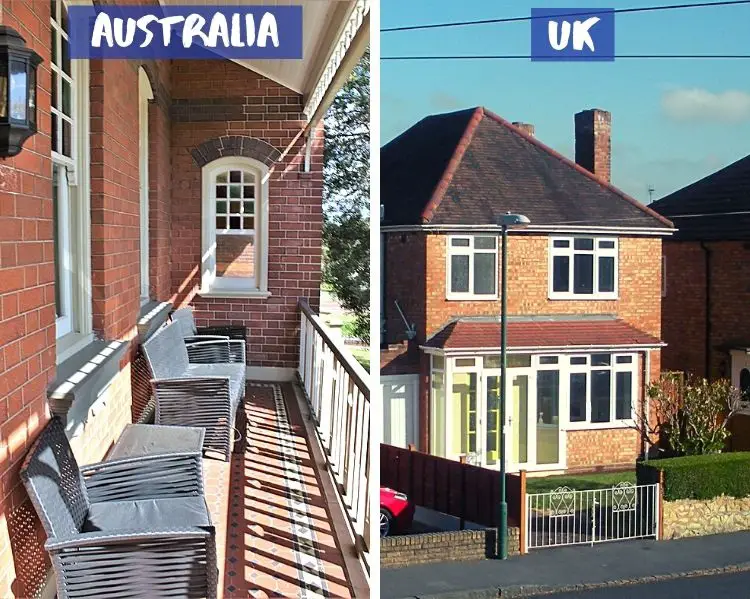
In the UK we tend to have an enclosed, glass-fronted porch on the front of houses where we keep things like muddy shoes and umbrellas! They add an extra layer of insulation around the front door too.
Eaves: Large vs Small
You’ll find eaves in Australia overhang the house much more than in the UK, providing extra shade from the sun against the windows.

In the UK the eaves are tiny, allowing as much sun as possible onto the windows to heat the home.
Windows in Australian Houses
Windows are a bit different in Australian homes to in the UK. Older houses over there tend to have small sash windows with wooden frames (sometimes with security bars over them!), and newer homes often have large, metal-framed windows that slide open sideways.
You nearly always have fly screens (mesh) over opening windows in Australia too. Even though the insects are scarier Down Under, you get way less of them in the house than you do in the UK! (Apart from cockroaches unfortunately.)
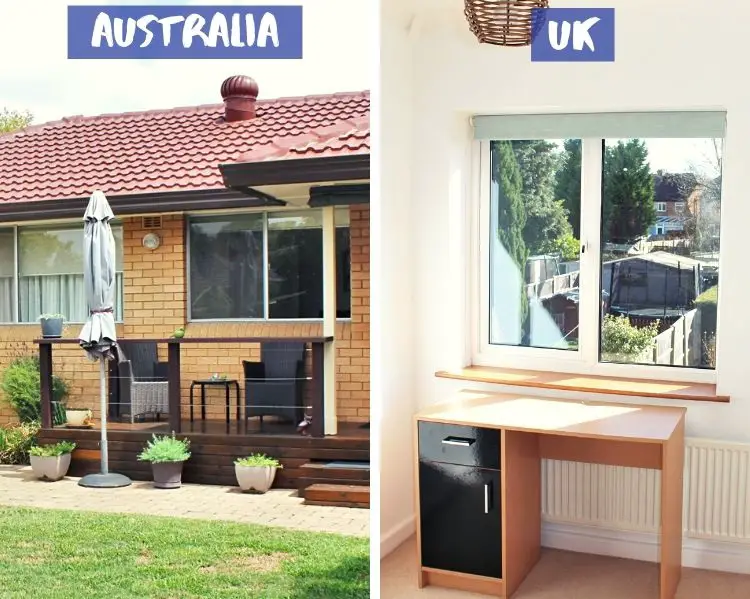
In the UK we tend to have double-glazed windows with thick white PVC frames that open outwards. No fly screens for us!
Screen Door
In Australia they also usually have two front (and sometimes back) doors that sit one in front of the other. One is the standard front door, and the other is called a screen door, which normally has a thin metal frame with a screen of mesh across it to let air in but keep insects out.

This means you can leave the main door open while you’re home but still have airflow. Some older houses have a security grille door as its second door instead, usually with mesh over it. In the UK we have, well, just a front and back door!
Washing Machine: Utility Room vs Kitchen
This is definitely a winner for the Aussies; a separate utility room for your washing machine is standard in Australia. Out of over 80 homes I house sat in, I only saw a washing machine in a kitchen once, and that was in an older-style flat.
I’ve had friends living in old apartment blocks in Sydney with a communal laundry, but every place I’ve stayed at, no matter how small, has had a utility room. Either that or a big built-in cupboard in the hallway, landing or outhouse that fits a washing machine and dryer.
Also, it’s standard in Australia to have a tumble dryer, even though the country’s warmer, so you’d think hanging clothes to dry naturally would be more common. People don’t seem to use dryers that much, but absolutely everyone has them for some reason!
In the UK, you’re doing very well if you can afford a house with a separate utility room, and dryers certainly aren’t that common. You’d have to mount it on the wall next to your cooker!
They also sometimes have top-loader washing machines in Australia, and doing a cold wash seems to be more of a thing than in the UK. They tend to use the word “laundry” instead of “washing” too.
Open-Plan Houses vs Separate Rooms
I think it’s pretty well known that open-plan houses are more common in Australia than in the UK. (I mean, you only have to watch Neighbours!)
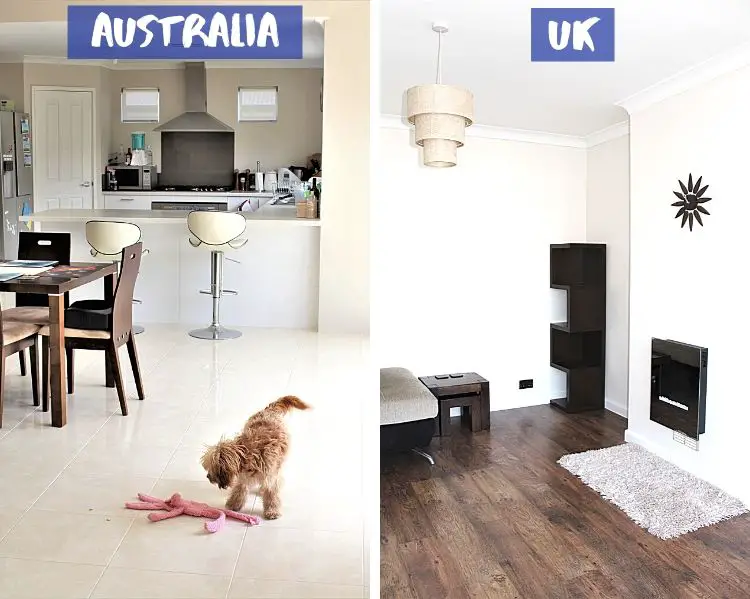
Older houses in Australia often have separate rooms in the living area, but newer houses tend to be more open plan. I’m not quite sure which I prefer. Open plan feels more spacious, but it’s quite nice to be able to use different rooms for different activities.
Bungalows vs Two-Storey Houses
In Australia it’s much more common to live in a bungalow than a house with two floors. The very old terraced houses in Sydney have an upstairs, and quite a lot of new mansions do, but Australia has a much bigger proportion of single-storey houses in general than the UK does.
Bungalows are actually quite scarce in the UK and something highly in demand for retired people.
Stand-Alone Mailbox vs Letter Box
In Australia you always have your letter box (that they call mailbox) on a stand or wall at the front of your driveway instead of a hole in your front door like in the UK!
Heating and Cooling Homes in Australia vs UK
Although Australia is a warm country, much of it does get pretty cool in the winter, particularly overnight. You will likely need some form of heating in your home unless you’re far north in the tropics.
The most common complaint you’ll hear from expats in Australia is how cold the houses get in the winter. Since Australian houses are built to stay cool, they feel much colder than a British house would under the same temperatures. In the daytime it’s very often colder indoors than outside!
It also gets pretty stifling during the summertime in Australia, so you’ll need at least a fan to keep you cool!
Insulation? What Insulation?
Insulation in Australian houses is certainly uncommon, whereas in the UK we have both loft insulation and cavity wall insulation (where expanding foam is squirted between the two layers of bricks that make up your exterior walls). This article on Australian insulation states that a study found the death rates from cold weather in Australia is double the rate in Sweden!
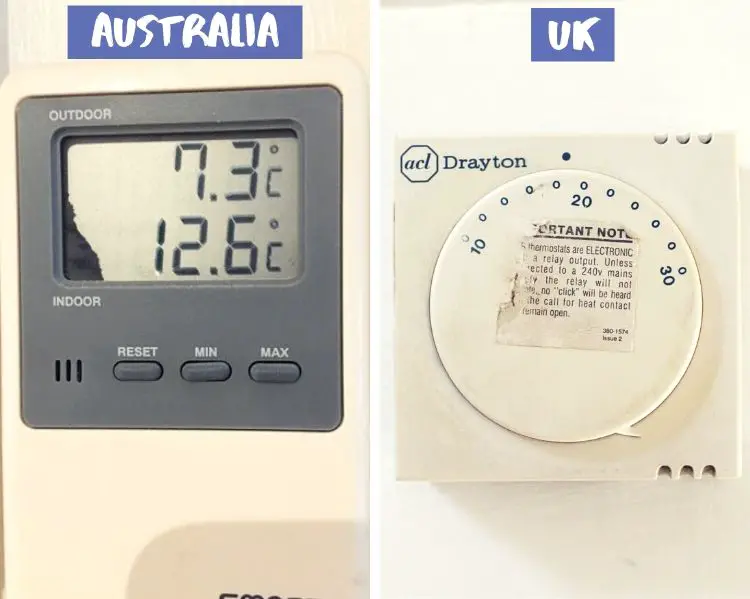
I use a hot water bottle and blanket all day if I’m at home during the winter in Sydney, even if it’s 18 outside! I stayed with a family in Newcastle once, a couple of hours north of Sydney, and it was colder indoors than when I’d camped the previous nights! I had three thick duvets and a hot water bottle and still couldn’t sleep!
Central Heating vs Single Gas Heater
The typical British gas central heating with radiators mounted on a wall in each room doesn’t seem to exist at all in Australia. They occasionally have central heating via vents that blow out hot air, but it’s extremely rare. I think only three of the 80-something houses I’ve house sat in had that, and according to an engineer I know, it’s one of the most inefficient ways of heating a home.
The most common method of heating homes in Australia is to have a single gas heater in the living room. It’s very different to anything we have in the UK, and is free-standing rather than wall mounted, but hooked up to the gas supply via a pipe that goes into the floor.
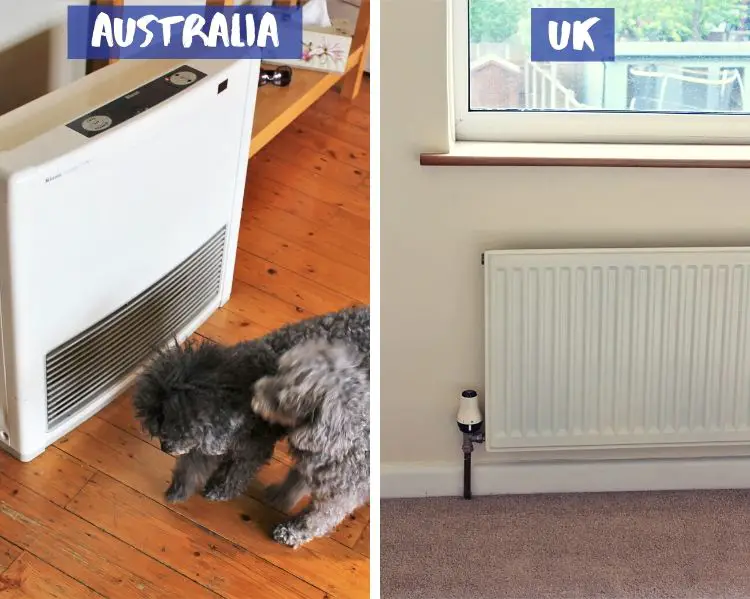
These actually work very well but won’t usually heat multiple rooms. Some people use little plug-in radiators on wheels in the bedrooms instead, which I’ve found do the trick.
Wall Fire vs Air Conditioning
The classic British fireplace isn’t really a thing in Australia, even in regions like Sydney that get quite cold in winter. Newer home occasionally have an electric fire on the living room wall, but it is quite rare.
The much older Australian houses (over 100 years old) usually have chimney breasts and original fireplaces, like you might get in period homes in the UK, but they don’t seem to be widely used.
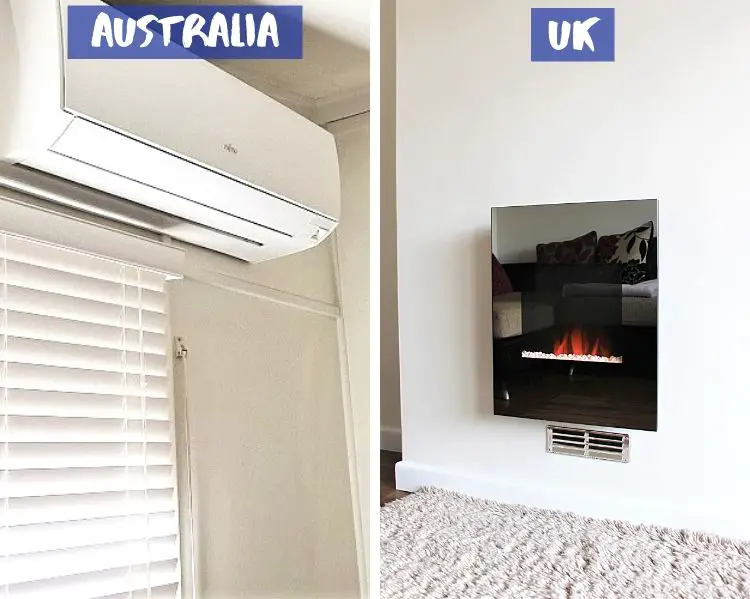
What’s more common is air conditioning, although I was surprised whilst house sitting at how many homes in Sydney didn’t have it considering the heat. Australians have told me that it didn’t used to be hot enough to need it, whereas it’s getting much hotter now in summer.
Australian Back Gardens Compared to UK
The size of your back garden in Australia will really depend on how close you live to a city centre and how densely populated your area is. The gardens in Sydney are generally much smaller than the ones in my home town of Solihull, but that’s a regional town and not a major city.
Conversely, when I went to university up north in Sheffield, all we had was a tiny back yard like on Coronation Street! Homes I’ve stayed in further out in the Australian suburbs have had much bigger back gardens than the more central homes. They vary just as much as they do in the UK.
Here are a couple of differences between back gardens in Australia and those in the UK.
The Back Veranda vs Patio or Conservatory
Yes, one veranda isn’t enough! Older Australian houses in particular tend to have a back veranda as well as a front one. Houses that don’t have these usually have some kind of solid cover overhead to shade their patio instead, which you’ll understand the need for once you’ve felt the severity of the Australian sunshine!
At the back of British house you’d usually have a patio without any cover, or if you’re a bit fancy, a conservatory.
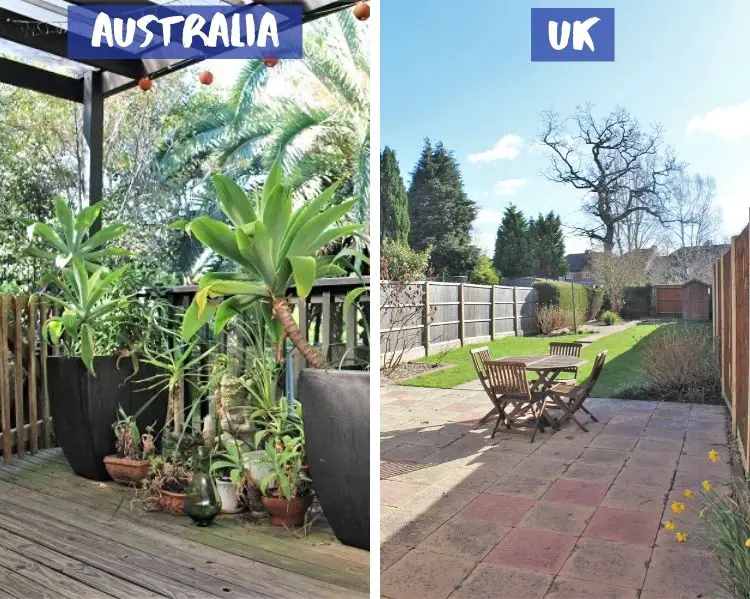
I would imagine a room made of glass wouldn’t be too practical under the Australian sun! Even the tinted plastic covering like in the picture above creates a sauna effect. A solid cover is much cooler, even though it doesn’t let as much light through.
Swimming Pool vs Um, No Swimming Pool
Let’s face it, the home swimming pool is unlikely to take off in the UK! It is literally something that only millionaires have – imagine the heating cost for a start! Paddling pools and inflatable hot tubs however, reasonably popular!
Swimming pools aren’t quite as common in Australia as you might think, not in Sydney anyway. I have house sat in quite a few places with pools (sometimes solar heated!), but it is usually something wealthier people have.
Australian Bathrooms
Bathrooms are a much fancier affair in houses in Australia vs UK. So much so that I’ve given them their own category! Here are some of the differences.
Plug Switches in the Bathroom
In the UK, plug sockets aren’t allowed in bathrooms because of the danger if they get wet. In Australia, plug sockets in bathrooms are the norm.
At first, I thought they just had poor safety standards, but the guy I travelled with was an electrician and explained that there are differences with the electrical systems in Australian houses that mean it’s safe to have sockets in bathrooms. (I’m afraid the details were too boring for me to remember!)
They still have lots of strict regulations on where the sockets can be etc, but it is standard to have them. This means you can have a wall bracket to permanently keep your hairdryer or appliances next to the mirror and not have to dry your hair somewhere random like your bedroom floor!
The Triple Light Switch
Similarly, bathroom lights are turned on by a wall switch in Australia, rather than a pull cord like in the UK. And they’re not just any old light switch, as you’ll see from the picture below!
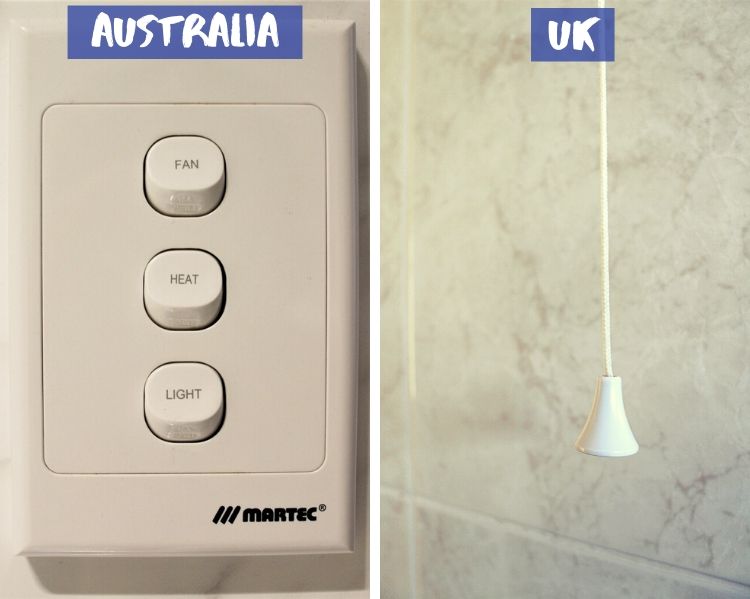
I would say at least half the houses I’ve stayed in have had both “normal” lights and special light bulbs that heat the room up. According to my dad you can get these in the UK too, but I’ve definitely never seen them!
Also having an extractor fan in the bathroom is standard in Australia, whereas in the UK you usually have to open the window to let the steam out, even if it’s snowing outside! I’ve just had a fan fitted in my old house in the UK that I rent out, as the mould got so bad.
The Bath Side Panel
I hadn’t really thought about this until an Australian friend went to Wales and said that the bathtub where she stayed had a weird plastic panel along the side that looked really cheap!
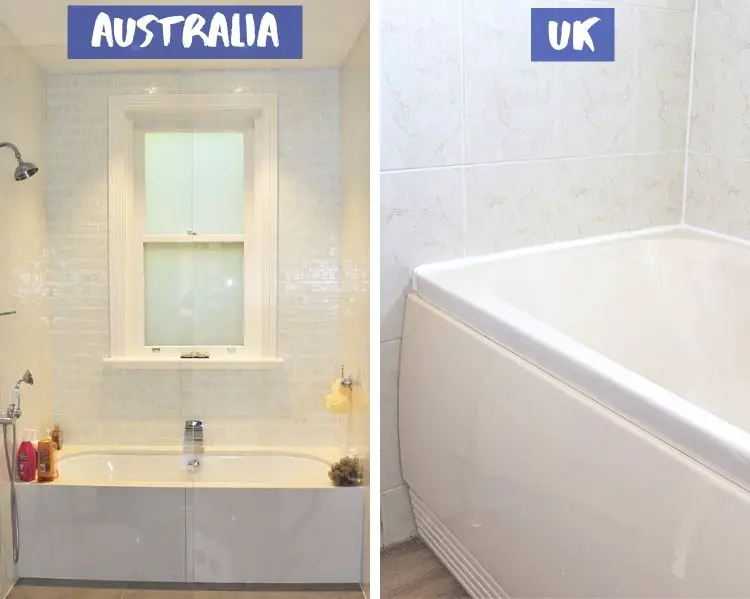
In Australia they always have a solid edge around the bath, and never the flimsy plastic like in the UK. Although quite a few houses don’t have a bathtub in Australia at all, just a shower cubicle.
The Vanity
Another “weird” thing my friend noticed in Wales was that the sink had no cupboard around it. In Australia bathroom sinks always have a vanity unit underneath, which is a cupboard with drawers to store things in, as well as a flat surface to use around the sink.
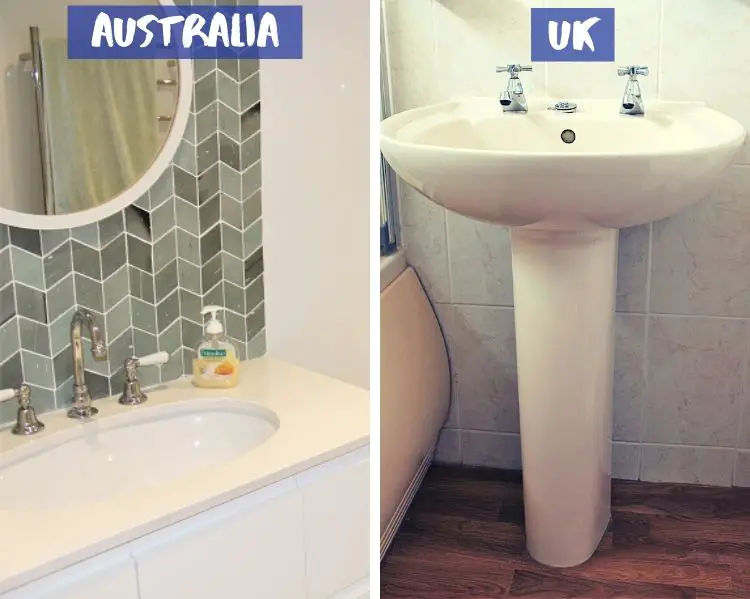
It’s pretty standard in the UK to have the sink on a stand like in the picture above, and just enough surface to rest a bar of soap! The only storage space I had in my UK bathroom was a tiny cabinet on the wall. You can also see that my plastic bath panel actually takes up the space below the sink, so you couldn’t fit a cupboard there if you tried!
Household Terminology
There are also some differences between the names of house-related items in Australia and the UK. I’m sure there are more, but here are a few off the top of my head.
Sofa (UK) = Lounge (Australia)
Lounge (UK) = Lounge room (Australia)
Bedding & towels (UK) = Manchester (Australia) I believe this is from the olden days when cotton items had to be imported from Manchester in the UK!
Duvet/Quilt (UK) = Doona (Australia)
Flat (UK) = Unit (Australia)
Washing (UK) = Laundry (Australia)
Property (UK) = Real estate (Australia)
Post (UK) = Mail (Australia)
So yes, in Australia you sit on a lounge in the lounge room and then go and enjoy your soft new Manchester in bed!

That’s it for now on the differences between houses in Australia vs UK. To learn more, check out my post on the different styles of housing in Australia, from the Colonial period to modern day. Thanks for reading!
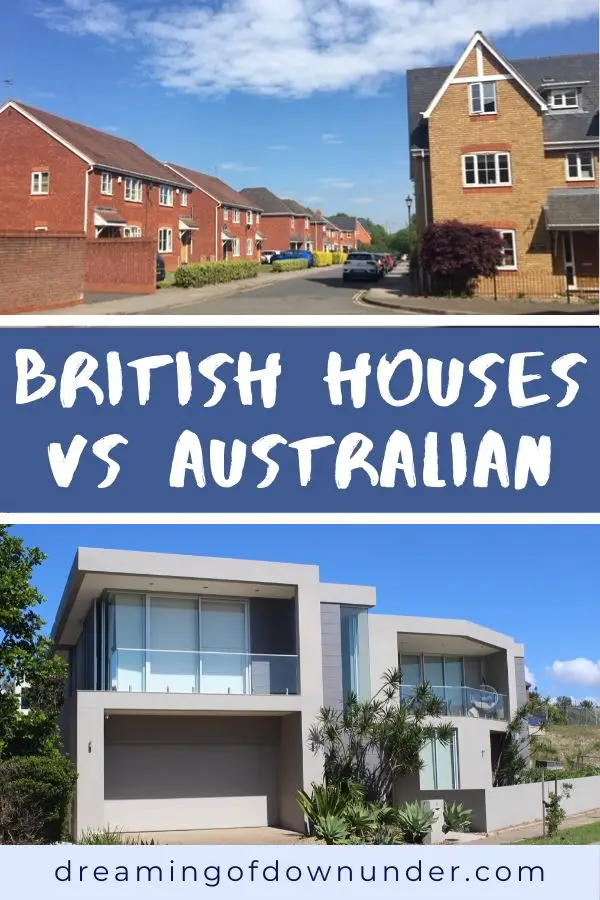
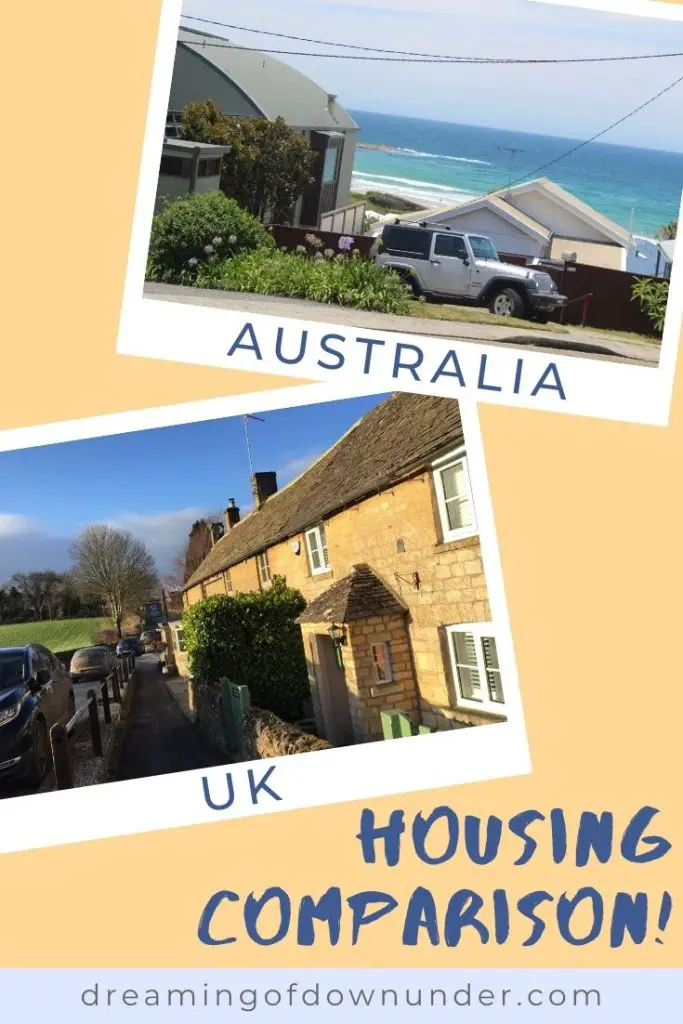
Lisa Bull, founder of Dreaming of Down Under, has been living in Australia as a British expat since 2015. After travelling to every state and territory in Australia and living in Perth, Brisbane and Sydney, Lisa knows from first-hand experience the best destinations to visit in Australia and the best budget travel tips. Her guides on this blog have been read by over 700k readers and helped thousands of people achieve their dream of living in or travelling Australia.
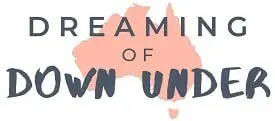



Speaking as an Australian, insulation is common in houses it helps keep the houses cooler in summer and warmer in winter. Its a luxury to have a dryer unless you live in apartments then it’s necessary as clothes horses take up space. Bathroom light switches depend on how new the places are lots of bathrooms are 1 light and 1 fan that are separate units. Its nicer to have the heat lights though especially in southern states where it’s colder more days of the year.
Australia is a vast country with very different climate needs. A lot on this list is pretty true universally for Australia but a lot is also very specific for the central to northern states rather than those who live further south.